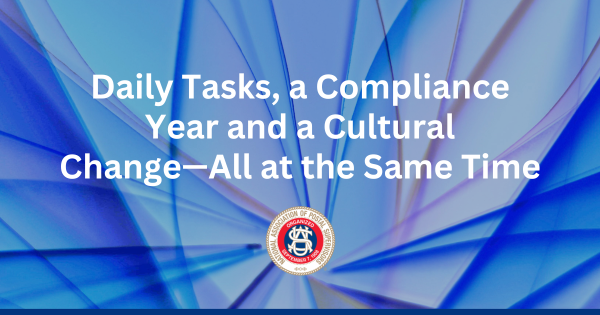Daily Tasks, a Compliance Year and a Cultural Change—All at the Same Time
Daily Tasks, a Compliance Year and a Cultural Change—All at the Same Time
By Dee Perez
NAPS Northeast Region Vice President
EAS employees never have been tasked with so many daily responsibilities all at once in my 36 years in the Postal Service. When I started, we had numerous tasks and manuals to follow that haven’t changed much regarding your responsibilities.
However, back then, we had more EAS employees per office and a district operational support structure to help each of us accomplish these tasks. Perhaps because computers weren’t asked to do what they can do today, we didn’t have the computer processes or programs with which to work or analytical data at our fingertips to digest as we do today.
The thought process back then was that, as computers evolved, they would make EAS jobs easier and faster. That was Postal Service Headquarters’ philosophy, which was logical thinking at the time. It was accurate if the responsibilities and staffing levels remained the same and the additional tasks we are asked to do today hadn’t emerged.
However, this rational thinking back then has led to fewer EAS employees with more responsibility and less time to complete tasks as analytics and computer technology have rapidly expanded in our work and personal lives. Consequently, the time allotted to accomplish everything has not increased.
Therefore, stress in EAS employees’ lives has increased dramatically, making their jobs in offices more demanding and nearly impossible to do on a regular basis. The many comments I receive from EAS employees about their jobs are negative. When opinions are at an all-time low, something is wrong with the USPS.
Computer technology has led to an increase in employment of EAS employees at higher levels in USPS Headquarters, which involves pulling data, monitoring compliance and sending out emails eight hours a day. In some instances, higher-level EAS employees are helped by friendly postmasters who also contribute to the email traffic with reminders to EAS employees they need to complete a task now!
Yet, frontline EAS employees never are given any additional help in conquering an increasing workload, which exacerbates the situation because everyone in upper management is aware of this problem. Yet, they turn a blind eye to it.
I’m not aware of any privately owned company that manages as many employees simultaneously or has employees with as diversified responsibilities as a USPS EAS employee. Yet, most are browbeaten, disrespected and made to think their jobs are 24/7, with Zoom meetings they must attend on their nonscheduled days and into the evening hours.
The compliance aspect for all EAS employees is an exhausting undertaking because there’s no time for a lunch break given the times Zoom meetings are scheduled and the need to be out on the street monitoring their employees. This cycle is taxing both physically and mentally; no wonder EAS employees fall behind in most tasks. There are too many tasks to handle on a daily basis.
I have heard concerns from USPS leadership about changing the culture. I’m confused, does this include EAS employees, as well?
I’m confused because leaders who speak to their subordinates often lack dignity and respect. If the culture change includes EAS employees, I don’t see it. I’ve been on Zoom meetings and received numerous phone calls, text messages and emails. I can tell you some leaders struggle to manage their anger effectively.
You can hear it in the words they use and in the tone of their voice when speaking, along with their choice of words, such as “corrective action for failure to follow my instructions.” This often is used as a motivating threat toward the individual in their conversations in front of everyone.
I don’t believe these types of conversations will change any culture anytime soon. These conversations only serve to create a distance between the leader and the subordinate, doing nothing to resolve or gain buy-in when treated in this manner.
The culture change sought will only occur when USPS Headquarters sets an example for how leadership treats subordinate leaders downstream. If district leadership doesn’t hold their people accountable, nothing will ever change.
